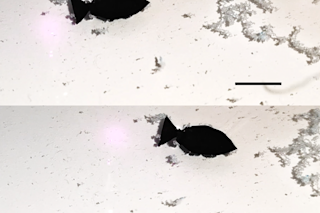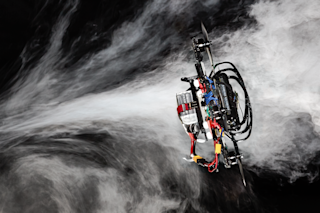SAFFiR undergoes testing aboard the decommissioned USS Shadwell in Mobile, Ala. (U.S. Navy photo by John F. Williams) Someday, when a fire breaks out aboard a U.S. Naval ship, sailors may bypass the red fire extinguishers and instead call upon the services of a 5-foot, 10-inch, 143-pound firefighting robot. Scientists unveiled the two-legged humanoid robot Wednesday at the Naval Future Force Science & Technology Expo, and we challenge you to find a cooler way to put out a fire. Although the robot has only demonstrated its abilities in a controlled environment, scientists envision a future where human-robot hybrid teams work together as first responders when flames rise at sea.Meet SAFFiR The walking fire extinguisher goes by the utilitarian name Shipboard Autonomous Firefighting Robot, or SAFFiR for short. And the name is no accident: SAFFiR was designed to limit sailors’ exposure to smoke and flames in ships’ tight confines, keeping them… ...
US Navy Unveils a Firefighting, Humanoid Robot
Discover the Shipboard Autonomous Firefighting Robot, a revolutionary tool designed to enhance naval firefighting safety.
More on Discover
Stay Curious
SubscribeTo The Magazine
Save up to 40% off the cover price when you subscribe to Discover magazine.
Subscribe













